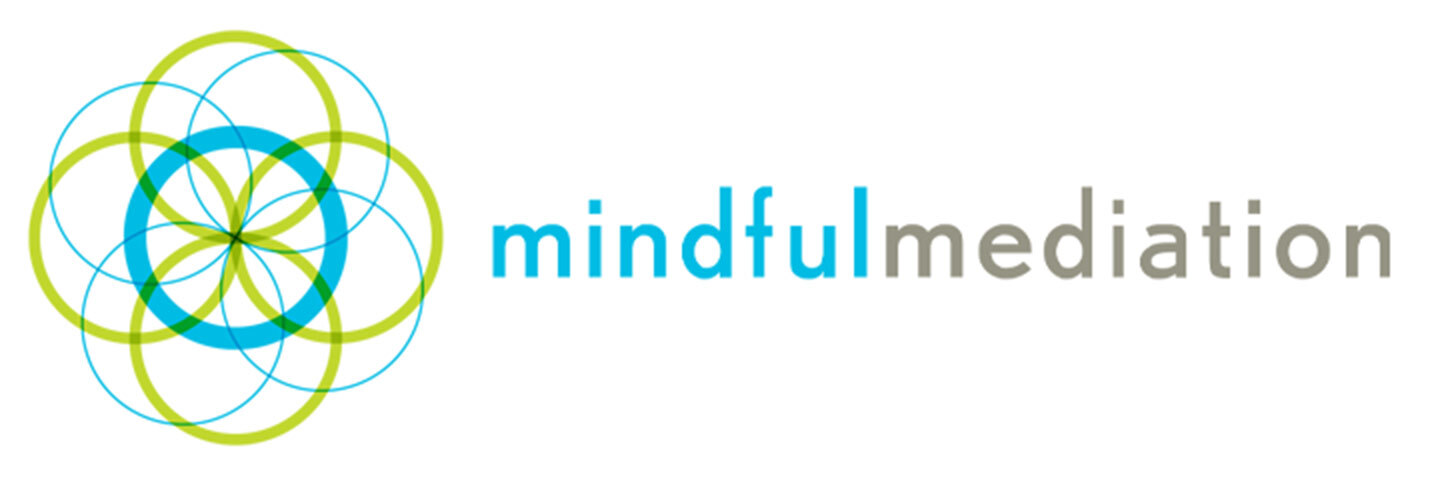Perspective-taking is an essential part of our lives. Consider all the ways you use this skill in your life. Now consider all the ways you could use this skill in your life! 
If you’re getting stuck, the next two weeks of blogs will explore this important skill. We will look at why perspective-taking is so essential, what the benefits of perspective-taking are, the different types of perspective-taking, and how we can increase perspective-taking in ourselves and others.
Perspective-Taking Defined
Perspective-taking may be defined as “the cognitive capacity to consider the world from another individual’s viewpoint” that helps the person understand and anticipate the others’ behaviour or thinking (Galinsky, et al, 2008).
More simply, perspective-taking may be defined as viewing the world from outside ourselves. This broader definition encompasses how we can use perspective-taking, not only to resolve conflicts or issues with others, but also how we use perspective-taking to assist in decision-making, or to resolve our own problems, that do not necessarily involve others.
An Adaptive Response
The ability to perspective-take is an adaptive response of human beings (and some other animals to various degrees). Without this ability human beings would be unable to live, work, and socialise together. There would be more wars, and less children. We would have been unable to solve many of the world’s problems through uni-directional thinking. It is our ability to perspective-take that has ended wars, solved novel problems, and enhanced our experience as human beings (through increasing our enjoyment of relationships, and our appreciation of the arts).
Despite the ability to perspective-take and the numerous benefits of perspective-taking, sometimes we choose not to be so good at it, or we literally are, not so good at it. Either we dig our heels in, and only allow ourselves to believe one perspective can be “right”, or it’s the “only way”, or we don’t have the understanding or skills to look further than our own view in that moment.
It seems that while the skill of perspective-taking is an adaptive ability of human beings, we don’t always use it as much as we could. Increased perspective-taking could overcome many of the problems we face today.
Let’s face it many wars have started, been fought, and lost. And many solutions have been identified to solve many of the world’s problems, and yet they have not utilised due to human greed or ignorance. Uni-directional thinking has in many cases, prevented world peace from prevailing, and led to the environment being destroyed world-wide at an alarming rate. If only we would listen and hear each others’ perspectives.
What Characterises Perspective-Taking?
Failing to perspective-take may be said to be characterised by black or white, narrow thinking, that involves a uni-directional approach to a situation. This narrowed thought pattern can prevent us from resolving our own problems or issues, as well as prevent us from resolving issues or problems with others.
When we consider, even just one more perspective than our own we open our world up to colour. A different shade can make all the difference. Even just one alternate view matters. Gradually, as we become more open, and begin to see multiple views or perspectives, a rainbow appears.
The Benefits of Perspective-Taking
There are numerous benefits of perspective-taking. Here are some of them:
Resolving Your Own Problems / Decision-Making
There are two main points under resolving your own problems and decision-making – multiple perspective-taking and meta-view.
Multiple Perspective-Taking
Ever thought about an important decision you needed to make when you were in different moods? It’s genius! When we consider a problem in different mood states our problem-solving ability is enhanced. We increase the likelihood of viewing the problem from multiple perspectives. When we view a problem from multiple perspectives, we are more likely to be able to solve it, and feel satisfied with our decision, as we have considered it comprehensively.
Decades of research indicates that moods or emotions affect our thinking in different ways. This research is going to be simplified here. For ease of comparison, researchers name some mood states “positive”, and others “negative” (even though all moods and emotions are important to our functioning as human beings).
“Positive” emotions have been found to lead to cognitive flexibility, they help us to adopt innovative and creative, collaborative problem-solving strategies. (Carnevale & Isen, 1986). They also attract others to us so even if we cannot resolve the problem at hand, we have support from others around us (Fredrickson, 2003). Furthermore if we do end up in conflict with another person, we are more likely to create mutually satisfying, integrative agreements (where the underlying interests of all concerned are considered).
“Negative” emotions have been associated with inflexible, narrow, and detailed-focused thinking. They can be helpful in searching for errors, risk assessing, and for highlighting the importance of an issue. On the downside, they often lead us to define the situation as “us” or “them” rather than mutually satisfying.
Emotions may be thought of as colours. When we view our life from multiple emotional states, a rainbow appears. The world is no longer good or bad, positive or negative. It can be both simultaneously. Seeing and being comfortable with all that life has to offer is a skill in itself.
Next time you have an important decision to make, consider it from multiple perspectives – in various moods to assist you develop creative solutions (or attract others that can help you resolve the issues creatively), and also consider the risks!
Meta-View
Perspective-taking can take the form of a meta-view. A meta-view is where we see ourselves as separate emotionally and psychologically from a situation (Lazarus, 2005). This may be described as seeing the issues from above, such as a pilot may see the world. By drawing ourselves out of a situation and witnessing from above, we are more likely to see the big picture. When we do this we are more likely to feel better, psychologically, and physically. A meta-view of the situation increases our self-awareness and contributes to self-development. We are more likely to see the big picture of the situation rather than narrowly focusing on ourselves and what we want.
Resolving problems with others
Perspective-taking is also relevant to resolving problems with others. There are three main points that fall into this area – perspective-taking, empathy, and novel problem-solving.
Perspective-Taking
Perspective-taking is a very important skill or ability. Sure it comes naturally to some people but for others it must be learnt. Conflict resolution provides a great place to start.
Perspective-taking may be said to be one of the most important factors in conflict resolution. When we look at a situation from other another persons’ perspective we are more likely to be able to resolve issues with them, and for the resolution to be sustainable.
Great turning points occur during conflict resolution when one person acknowledges the view or felt emotions of another. The other person or persons often follow with acknowledgements of their own. People often begin to listen more deeply and show signs of relief once others have begun to show some level of understanding for their view, actions and / or emotions. Resolution can then naturally flow.
Acknowledgement does not necessarily involve agreement of the view, actions or thoughts. Sometimes all conflict resolution requires is for the people involved to listen, and be open to hearing the other persons’ view (and their emotional responses to it). It doesn’t necessarily require people to agree with each others’ perspective.
Sometimes people in conflict agree to disagree as they are unable to see the perspective of the other. In these cases listening can be enough to create shifts. In some of these cases, however, resolution may be less durable.
Empathy
Empathy involves higher-level perspective-taking. Empathy has been described as an “other-oriented emotional response congruent with the perceived welfare of another” (Batson, 1991). While there are a number of different forms of empathy, for the purpose of this article, let’s just say it requires more than a “cognitive consideration of another’s point of view.” It involves connecting to the felt emotions on some level. Some people are naturally empathetic. Others are not.
So for some people caught in conflict, a mediator or coach may be able to draw upon the person’s existing skills to encourage empathy between clients. For example, how would it feel, if they were in the other person’s situation? Take the case of burn out. When we are burnt out and stressed our thinking may be viewed by others as more irrational than usual, or even out of character. We may say or do things that we later regret.
Workplaces are often less forgiving than other areas of life and sometimes the actions we take can have a serious impact on our career. For others’ in conflict, perspective-taking or listening alone is all that can be achieved at the time and this may be enough to resolve the conflict as mentioned above.
Solving Novel Problems (Creative Solutions)
Synergy describes a state where two or more people or things work together in a way that produces an effect that is “greater than the sum of their individual effects.” (Business Dictionary). Synergy enables people to create solutions to problems that are far greater than what one individual could achieve alone.
Synergy involves perspective-taking – the ability of others to hear and integrate each others’ point of view. Using the research findings above on the effect of emotions on our thinking, we can also help shift the mood of groups of people to change or influence unique perspectives. Viewing issues from multiple-perspectives can help to resolve problems in innovative and creative ways.
How to Increase Perspective-Taking
Perspective-taking is an essential and highly adaptive skill of human beings. It is great to cultivate in ourselves and others to enhance our enjoyment of life, ensure we can live and work together effectively, and create innovative solutions to novel problems. When we perspective-take a rainbow appears.
Next week’s blog will focus on how to increase perspective-taking.
***************
References
Batson, C.D. (1991). The Altruism Question: Toward a Social Psychological Answer. New Jersey: Lawrence Erlbaum Associates, Inc.
Batson, C. D., Early, S., and Salvarani, G. (1997) Perspective Taking: Imagining How Another Feels Versus Imagining How You Would Feel. Personality and Social Psychology Bulletin. Vol. 23. No. 7 pp. 751-758
Business Dictionary. (2013). https://www.businessdictionary.
Carnevale, P., & Isen, A. (1986) “The Influence of Positive Affect and Visual Access on the Discovery of Integrative Solutions in Bilateral Negotiation.” Organizational Behaviour and Human Decision Processes. Vol. 37(1)
Galinsky, A., Maddux, W., Gilin, Debra, and White, J. (2008) Why it pays to get inside the head of your opponent: The differential effects of perspective taking and empathy in negotiations. Association for Psychological Science. Vol 19, No. 4
Kabat-Zinn, J.(1994) Wherever you go, there you are: Mindfulness mediation in everyday life. New York: Hyperion Books.
Kumar, R. (Mar 1997). “The Role of Affect in Negotiations: An Integrative Overview” The Journal of Applied Behavioural Science Vol. 33(1) p.84.
Lazarus, Linda (February, 2005) A Conversation with Professor Leonard Riskin about Mindfulness, Dispute Resolution, and Mindfulness Resources for Mediators. Mediate.com. Retrieved 11 April 2013 from https://mediate.com/articles/





 home says
home says
May 12, 2013 at 8:52 pmI simply needed to thank you very much all over again. I do not know the things that I would’ve handled without the actual creative ideas discussed by you regarding my topic. It was actually a real hard situation in my opinion, nevertheless looking at your specialised way you solved that made me to jump with joy. I am happier for the service and thus hope you comprehend what a great job that you’re accomplishing training the rest through your web page. Most probably you have never got to know any of us.
 グッチバッグアウトレット says
グッチバッグアウトレット says
May 13, 2013 at 5:54 amシェアWONDERFUL Post.thanks .. もっと待つ.. ?
 マイスターシュテュック says
マイスターシュテュック says
May 13, 2013 at 2:18 pmI’m often to blogging and i really admire your content. The article has actually peaks my interest. I’m going to bookmark your web site and maintain checking for brand new information.
 ゴヤール 激安 says
ゴヤール 激安 says
May 14, 2013 at 6:57 pmYoure so cool! I dont suppose Ive read anything like this before. So nice to seek out any person with some unique thoughts on this subject. realy thanks for beginning this up. this web site is something that is wanted on the web, someone with a bit originality. useful job for bringing something new to the internet!
 ゴヤール バッグ says
ゴヤール バッグ says
May 15, 2013 at 2:19 pmYoure so cool! I dont suppose Ive read something like this before. So nice to search out any person with some authentic thoughts on this subject. realy thanks for beginning this up. this website is something that is needed on the net, somebody with just a little originality. helpful job for bringing something new to the web!
 gold says
gold says
May 15, 2013 at 3:23 pmA powerful share, I just given this onto a colleague who was doing a bit of analysis on this. And he in truth bought me breakfast as a result of I found it for him.. smile. So let me reword that: Thnx for the treat! However yeah Thnkx for spending the time to debate this, I really feel strongly about it and love reading more on this topic. If potential, as you develop into expertise, would you thoughts updating your weblog with more particulars? It is extremely useful for me. Massive thumb up for this weblog put up!
 Isabel Marant says
Isabel Marant says
May 27, 2013 at 11:56 amI’m typically to blogging and i actually recognize your content. The article has actually peaks my interest. I’m going to bookmark your website and maintain checking for new information.
 air max pour femme says
air max pour femme says
June 1, 2013 at 4:26 pmIt is the best time to make some plans for the future and it is time to be happy. I have read this post and if I could I want to suggest you few interesting things or suggestions. Maybe you could write next articles referring to this article. I want to read more things about it!